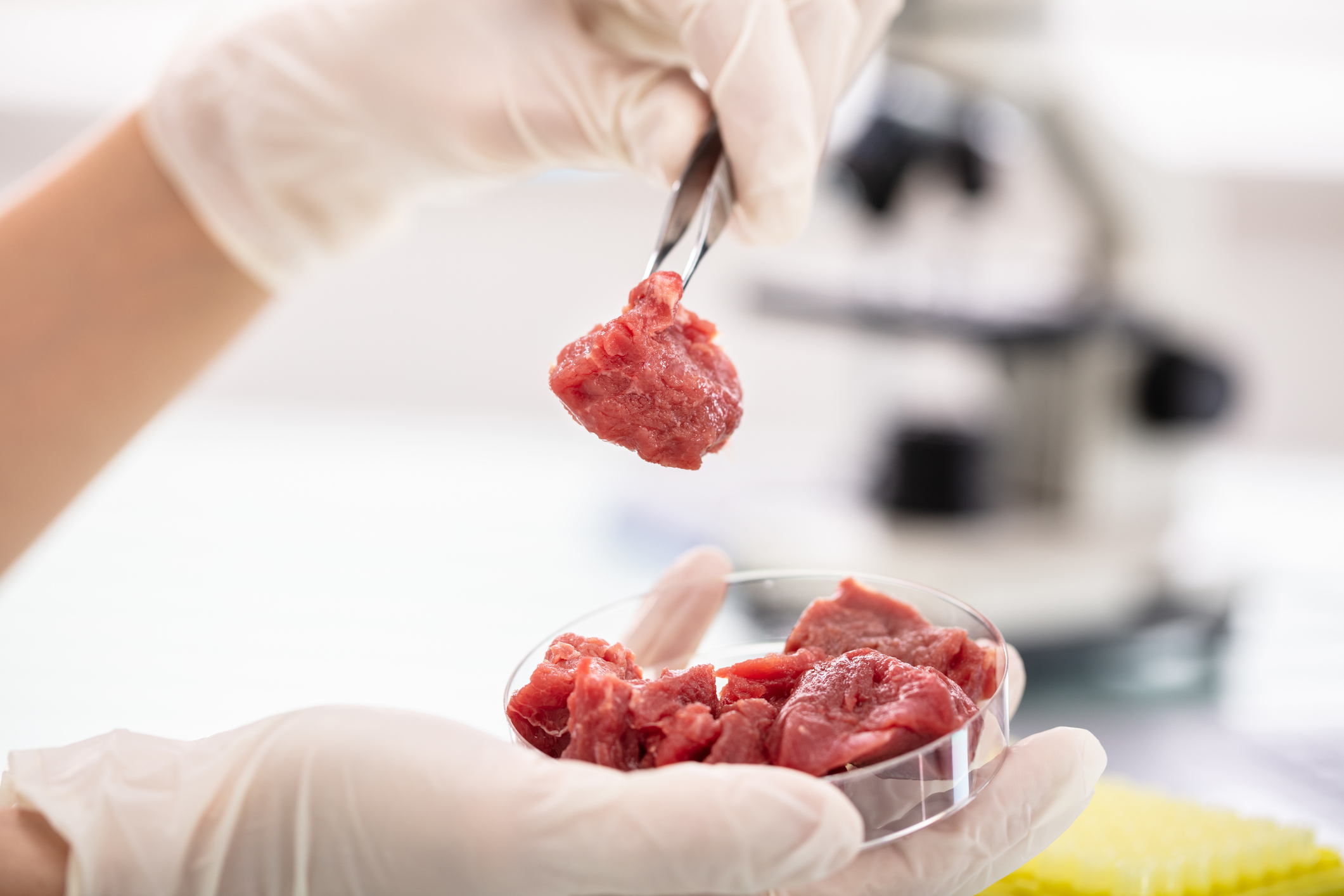The widespread enthusiasm for plant-based foods could be a bridge to the introduction and eventual acceptance of lab-grown animal meats, said panelists from the cellular agriculture industry in a presentation Tuesday.
As technology advances for the creation of animal tissue from cells for use as food, scientists may begin experimenting by adding some lab-grown animal matter into plant-based meat alternatives to give them a more authentic meat flavor, said panelists at the 2021 Food Edge Virtual Summit.
“If you have a plant-based product, you can essentially enhance it with flavors, aromas, or nutrients from some percentage of cell culture products,” said Luke MacQueen, co-founder and chief science officer, Boston Meats, which is focused on creating lab-grown tissues that mimic the texture of animal meats.
Potentially, even a minimal amount of lab-grown tissue, such as animal fat, could be used to make a plant-based product taste more like the animal it was supposed to come from, he said.
John Pattison, co-founder and CEO, Cultured Decadence, which is focused on creating lab-grown lobster and other crustacean meats, agreed that so-called “hybrid” products containing both plant and animal tissues have strong potential for success.
He pointed out that there is already an industry that creates imitation crab, lobster, and shrimp meats using alternative ingredients, and these companies will likely embrace cell-based alternatives.
“I imagine cell culture will be a natural step for them, once those products are on the market,” Pattison said.
Consumers who have been receptive to eating plant-based alternatives to animal proteins may be ready to try cell-based meat products as well, he said. Some people might already believe they have had cell-based products if they have tried foods from Beyond Meat or Impossible Foods, for example.
“If you are fine with that, cell culture is just a very natural next step,” Pattison said.
One of the goals at Cultured Decadence, he said, is to infuse the cell-based crustacean meats it is developing with fat that the animals don’t normally have in the wild. The addition of fat into lobster, shrimp, or crab tissue could eliminate the need to dunk these meats in butter, for example.
David Kaplan, director of the Tissue Engineering and Research Center at Tufts University, said he believes the ability to alter the flavor, nutritional content, and other attributes of cell-based tissues could be important to the eventual acceptance of these products, as will their sustainability benefits.
“You can tailor the nutrition and the taste, and you can do it without taxing the environment, without hurting an animal, and making it accessible anywhere,” he said. “I don’t know how this can’t succeed; it’s just getting us there that’s the challenge.”
MacQueen said that while the research he’s seen has shown that growing meat tissues in laboratories does not necessarily require less energy than traditional methods of raising animals for meat, cellular agriculture does have the potential to greatly reduce land, water, and animal use.
“Those are very important metrics of sustainability,” he said.
One of the next steps that will be required for cell-based meats to become mainstream is the education of regulatory agencies about these products and the processes that make them, which in many cases have evolved from medical uses into the food industry. The FDA and USDA have already begun to look into this area, said Kate Krueger, founder of Helikon Consulting, who moderated the panel, but the panelists said more research, testing, and approvals will be needed in the future.
Non-government agencies such as New Harvest and the Good Food Institute have made some efforts in this area at both the state and federal level, they said, but they cited the need for broad input from the cellular agriculture community.
“Regulatory agencies will need as much information as possible, so that they know which questions to ask and which tests to run,” said MacQueen, adding that the involvement of third-party companies that conduct testing and analyses for the pharmaceutical and food industries will also be important.
Kaplan noted that academia could also play a role in the regulatory process by providing peer-reviewed scientific research about the cellular agriculture industry.
Related: Alternative Protein Market to Reach $290 Billion; The New Meat: Developed by Science, Grown in a Lab.

